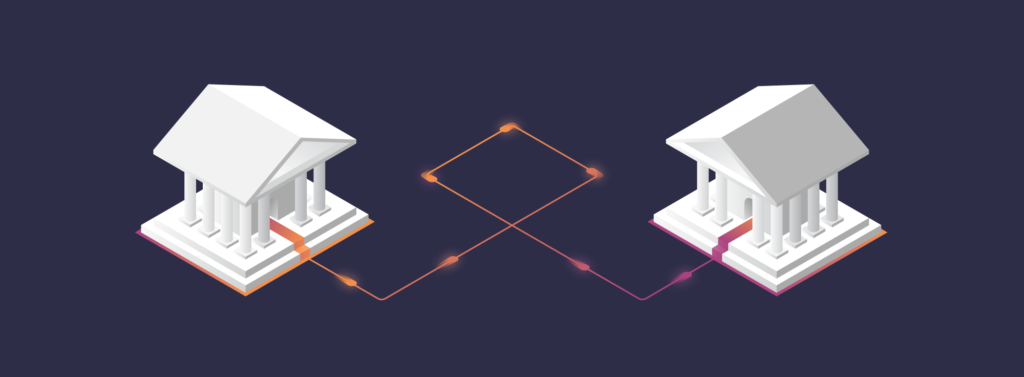An ACH transfer is one of the common methods of transferring money online. You can use ACH transfers for online bill payments, or direct deposits, along with other transfers.

Here are the best ways to send money to India from abroad
ACH transfer meaning
An ACH transfer is an electronic, bank-to-bank money transfer processed through the Automated Clearing House Network. ACH transfers are commonly used by consumers for transactions like external funds transfers, person-to-person payments, bill payments and direct deposits from employers. ACH electronic transfers are also used for mail order, telephone order (MOTO), business to business (B2B), and direct debit transactions.
Features & benefits of ACH electronic transfer
- ACH transfers are electronic, bank-to-bank funds transfers conducted through the Automated Clearing House Network.
- ACH transfers are simple, quick and usually free of charge.
- ACH direct deposits are transfers into an account, including deposits from employer, tax refund deposits, bill payments, etc.
- There may be restrictions on the number of transactions you can initiate and you may incur additional charges, or there may be delays in fund transfers.
Types of ACH transfers
ACH transfers are processed in two ways, varying in delivery speed and cost you incur.
- ACH Direct Deposits
- ACH Direct Payments
ACH Direct Deposits
An ACH direct deposit is a kind of online funds transfer done by a business or government entity to consumers. With ACH direct deposits, an Individual receives money. You have to make an ACH direct payment to send money. Following are the types of payments that fall in this category:
- Payroll
- Employer-reimbursed expenses
- Tax refunds
- Annuity payments
- Interest payments
- Other government benefits
ACH Direct Payments
Direct payment via ACH (or ACH debit) pulls money from your account, for example, withdrawal of funds from a consumer’s account to pay for recurring bill payment, subscription service, or other types of bills.
Direct payments are used by individuals, businesses and other entities to transfer funds. For example, when you pay a bill online with your bank account, it is called an ACH direct payment.
When you set up a recurring bill payment, for example, the company you have to pay can withdraw the money from your account each month on a fixed date.
How to do an ACH transfer
Following are simple steps to set up an ACH transfer:
Step1: Collect the necessary information required to do an ACH transfer, such as your name, your routing/ ABA number, your account number, account type, and transaction amount.
Step 2: Choose between ACH debit and ACH credit. As mentioned above, an ACH credit is the type of payment used in bill payment services. You can mandate your financial institution to send funds to a payee, such as a utility bill or car loan.
With an ACH debit, you execute transactions with the payee. Hence, you need to share your payment details (including account and routing numbers) to the payee.
Step 3: Execute the ACH transfer. Before you execute the transaction, you first need to complete some paperwork online or hard-copy forms, such as:
- Link accounts: You will need to give ACH instructions to the financial institution responsible for initiating the transaction.
- Mention if the transaction will be a credit or debit to the account where the transaction originates.
- Enter the payment amount.
- Specify the payment date.
How long does it take
ACH is not the fastest way of money transfer. Delivery of an ACH transfer can take several business days and also depends on the days when banks are open – typically not on weekends or holidays. ACH transfers go through a verification process and are executed by a network operator in batches only seven times a day, unlike the real-time processing of wire transfers.
The timing varies depending on the type of payment (domestic or international). Operators can process ACH credits and deliver within the same day, or in one to two business days. Whereas, ACH debit transactions must be processed by the next business day.
ACH transfer fees
ACH debit transfers are usually free of charges, such as payroll direct deposits and most bill payments. However, there can be fees to make expedited bill payments. The bank or financial institution might charge a fee of $3 for transferring money between accounts at different banks for ACH credit transfers, while many offer the service for free. There are no charges for receiving funds.
Person to person payment through third-party apps may cost a small fee.
ACH transfer transaction limits
While it is convenient to send money via ACH between banks, there are some restrictions on funds transfers, such as:
- Limits on amount: Banks or financial institutions may put limits on how much money you can transfer.
- Cutoff times: After working hours and on holidays, a transfer won’t be processed until the next business day.
- Fee for insufficient funds: In case of insufficient funds in your account, your bank might charge you a fee and stop the transactions.
ACH transfers can be a convenient and cheap way to transfer money, but you must check your bank’s or a financial institution’s policy first. So that you can avoid unexpected processing delays, any fees, and potential limits. Some banks don’t allow consumer ACH transfers to banks outside the country.
Remember, you need to weigh in all the factors to select the best time for sending money online. SBNRI has made online money transfer to India easier for you by evaluating every factor and creating the perfect channel for all your remittances to India.
You can download the SBNRI App from the Google Play Store or App store to send money to India, open an NRI account, invest in the Indian market and enjoy many other NRI services. You can also click on the button below to instantly remit/transfer money to India. Visit our blog and Youtube Channel for more NRI specific solutions.



